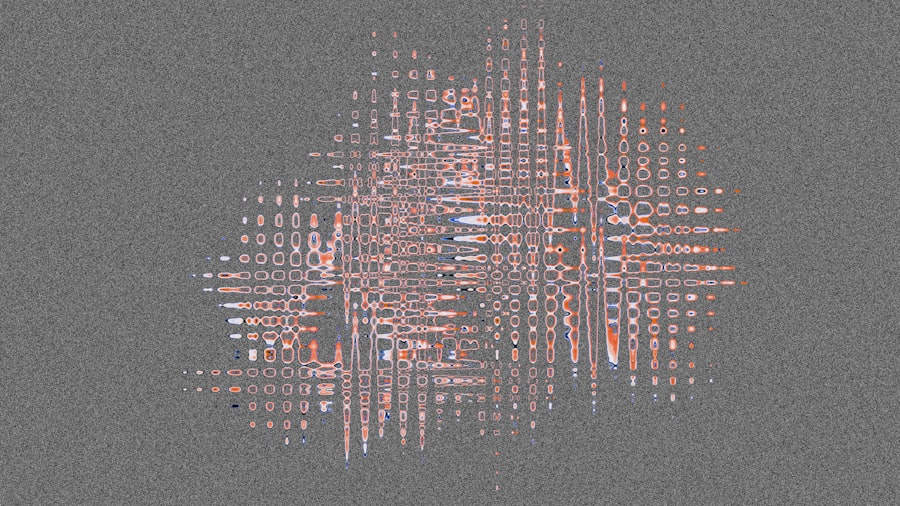A quantum bit, or qubit, is the fundamental unit of quantum information, analogous to the classical bit in traditional computing. While a classical bit can exist in one of two states—0 or 1—a qubit can exist in a superposition of both states simultaneously. This unique property arises from the principles of quantum mechanics, which govern the behavior of particles at the atomic and subatomic levels.
In essence, a qubit can be thought of as a spinning coin that is both heads and tails at the same time until it is observed. This characteristic allows quantum computers to process vast amounts of information simultaneously, offering a significant advantage over classical computers. The physical realization of qubits can take various forms, including trapped ions, superconducting circuits, and photons.
Each implementation has its own advantages and challenges. For instance, superconducting qubits are currently among the most widely researched due to their relatively high coherence times and scalability. On the other hand, photonic qubits offer the potential for long-distance quantum communication due to their ability to travel through optical fibers with minimal loss.
Understanding the nature of qubits and their operational principles is crucial for harnessing the full potential of quantum computing.
Key Takeaways
- A quantum bit, or qubit, is the basic unit of quantum information, capable of existing in multiple states simultaneously due to the principles of superposition and entanglement.
- Quantum computing has the potential to revolutionize fields such as cryptography, drug discovery, and optimization problems by solving complex calculations at an exponentially faster rate than classical computers.
- Entanglement, a phenomenon where qubits become interconnected and can influence each other’s states regardless of distance, is a key feature of quantum computing that enables faster and more efficient processing of information.
- Overcoming the challenges of maintaining qubits’ delicate quantum states, such as decoherence and error correction, is crucial for the development of practical quantum computing technology.
- Quantum bits have the potential to revolutionize real-world applications such as secure communication, advanced data analysis, and simulation of complex systems with unprecedented accuracy and speed.
The Potential of Quantum Computing
Quantum computing holds transformative potential across numerous fields, from cryptography to drug discovery. The ability of quantum computers to perform complex calculations at unprecedented speeds could revolutionize industries that rely on large-scale data analysis and optimization problems. For example, in finance, quantum algorithms could optimize portfolio management by evaluating countless investment scenarios simultaneously, leading to more informed decision-making and risk assessment.
In the realm of materials science, quantum computing can facilitate the simulation of molecular interactions at an atomic level, enabling researchers to design new materials with tailored properties. This capability could accelerate the development of superconductors, catalysts, and pharmaceuticals. The implications extend to artificial intelligence as well; quantum machine learning algorithms could process vast datasets more efficiently than classical counterparts, potentially leading to breakthroughs in pattern recognition and predictive analytics.
Harnessing the Power of Entanglement

Entanglement is one of the most intriguing phenomena in quantum mechanics and plays a pivotal role in the functionality of quantum computing. When two qubits become entangled, the state of one qubit becomes intrinsically linked to the state of another, regardless of the distance separating them. This correlation allows for instantaneous communication between entangled qubits, which can be harnessed to perform complex computations more efficiently than classical systems.
The power of entanglement can be illustrated through quantum teleportation, a process that enables the transfer of quantum states between qubits without physically moving them. This principle not only enhances computational capabilities but also underpins advancements in quantum communication protocols, such as quantum key distribution (QKD).
Overcoming the Challenges of Quantum Bit
| Challenges | Strategies |
|---|---|
| Noise and Error | Error correction codes, fault-tolerant quantum computing |
| Decoherence | Active error correction, quantum error correction |
| Scalability | Improved qubit connectivity, modular quantum computing |
| Hardware limitations | Improved qubit design, better control and measurement techniques |
Despite its promise, the development and implementation of qubits face significant challenges. One major hurdle is decoherence, which occurs when qubits interact with their environment, causing them to lose their quantum properties and revert to classical behavior. This phenomenon limits the coherence time—the duration for which a qubit can maintain its quantum state—thereby restricting the complexity of computations that can be performed.
To mitigate decoherence, researchers are exploring various error correction techniques and fault-tolerant quantum computing architectures. Quantum error correction codes can detect and correct errors without measuring the qubits directly, preserving their quantum information. Additionally, advancements in materials science and engineering are leading to more stable qubit designs that are less susceptible to environmental disturbances.
Overcoming these challenges is essential for scaling up quantum computers and realizing their full potential.
Quantum Bit in Real-World Applications
The practical applications of quantum bits are beginning to materialize across various sectors. In pharmaceuticals, companies like D-Wave Systems are utilizing quantum computing to simulate molecular interactions for drug discovery processes. By modeling complex biological systems at a quantum level, researchers can identify potential drug candidates more rapidly than traditional methods allow.
In logistics and supply chain management, companies are exploring how quantum algorithms can optimize routing and inventory management. For instance, Volkswagen has experimented with quantum computing to improve traffic flow in urban environments by analyzing vast datasets related to vehicle movement patterns. These real-world applications demonstrate that while quantum computing is still in its infancy, its potential impact on industries is already being realized.
Quantum Bit vs Classical Bit

The distinction between quantum bits and classical bits is fundamental to understanding the advantages offered by quantum computing. Classical bits operate on binary logic; they represent information as either 0 or 1. This binary nature limits classical computers’ ability to process multiple possibilities simultaneously.
In contrast, qubits leverage superposition and entanglement, allowing them to represent multiple states at once and perform parallel computations. This difference becomes particularly significant when considering computational complexity. Certain problems that are intractable for classical computers—such as factoring large integers or simulating quantum systems—can be solved exponentially faster using quantum algorithms like Shor’s algorithm or Grover’s algorithm.
The implications for fields such as cryptography are profound; many encryption schemes rely on the difficulty of factoring large numbers, which could be rendered obsolete by sufficiently powerful quantum computers.
The Future of Quantum Bit Technology
As research into quantum computing continues to advance, the future of qubit technology appears promising yet uncertain. Major tech companies like IBM, Google, and Microsoft are investing heavily in developing scalable quantum processors capable of executing complex algorithms. The race to achieve “quantum supremacy”—the point at which a quantum computer can perform a calculation beyond the reach of classical computers—has intensified interest in this field.
Moreover, hybrid computing models that combine classical and quantum systems are emerging as a practical approach for leveraging existing infrastructure while gradually integrating quantum capabilities. These models could facilitate a smoother transition into a future where quantum computing becomes mainstream. As breakthroughs in materials science and engineering continue to enhance qubit stability and coherence times, we may witness a new era of computational power that reshapes industries and scientific research.
Ethical Implications of Quantum Bit Technology
The rise of quantum computing brings with it a host of ethical considerations that must be addressed as this technology matures. One significant concern revolves around data security; while quantum key distribution offers unprecedented security measures, the advent of powerful quantum computers poses a threat to current encryption standards. Sensitive information protected by classical encryption methods could become vulnerable if adversaries gain access to sufficiently advanced quantum systems.
Additionally, there are implications for privacy and surveillance as quantum computing enables more sophisticated data analysis techniques. The ability to process vast amounts of personal data could lead to enhanced profiling capabilities that infringe on individual privacy rights. Policymakers must grapple with these ethical dilemmas as they seek to establish frameworks that govern the responsible use of quantum technology.
Furthermore, there is a risk that access to advanced quantum computing resources may exacerbate existing inequalities between nations and corporations.
Addressing these ethical implications will require collaboration among technologists, ethicists, and policymakers to ensure that the benefits of quantum computing are distributed equitably across society.
Quantum bits, or qubits, are the fundamental units of information in quantum computing, representing a significant leap from classical bits by utilizing the principles of superposition and entanglement. This advancement in computing technology is part of a broader exploration into complex systems and their dynamics. For those interested in delving deeper into the intricacies of such systems, an insightful article titled “Understanding Bifurcations: Exploring the Dynamics of Complex Systems” can provide valuable context and understanding. You can read more about it by visiting the following link: Understanding Bifurcations: Exploring the Dynamics of Complex Systems.





















+ There are no comments
Add yours